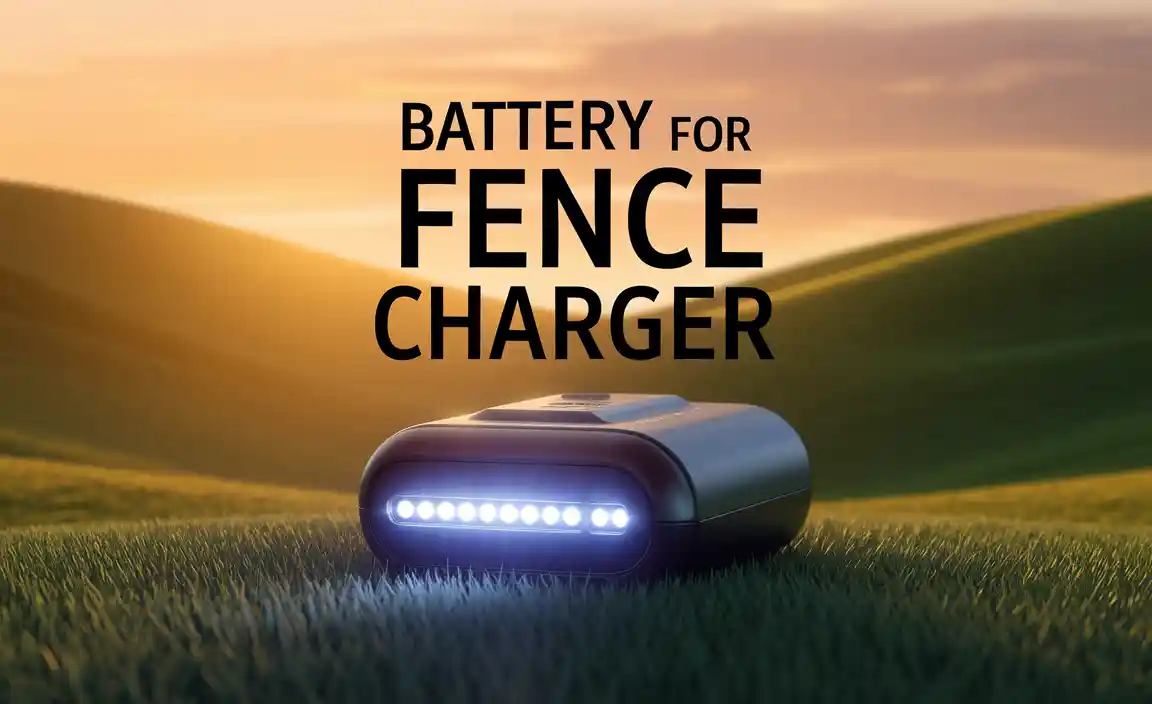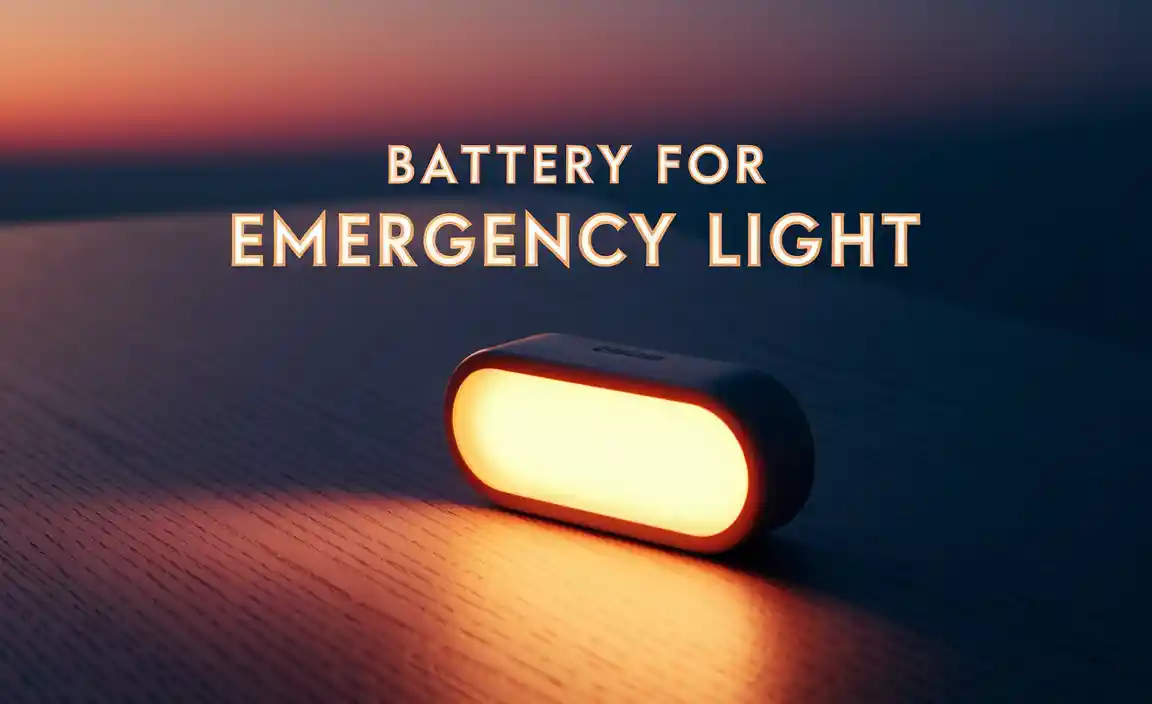Quick Summary: Charging a lithium car battery for electric cars is a straightforward process involving connecting your EV to a power source using its charging port and cable. Proper charging ensures your vehicle is ready to go, maximizing range and battery health. This guide breaks down everything you need to know for safe and effective charging.
Thinking about your electric car’s battery and how to keep it happy and healthy? It’s a common question that pops into many drivers’ minds. You might wonder if it’s complicated, if you’re doing it right, or if there’s a trick to it. The good news is that charging your electric car’s lithium-ion battery is designed to be simple and safe.
Unlike the days of filling up with gas, an electric car’s charging routine is more about plugging in and letting technology do its work. It’s an important part of owning an EV, ensuring you’ve got the range you need for your daily commute or longer journeys. We’ll walk through it step-by-step, making sure you feel confident every time you connect your car to its power source.
This guide will cover everything from the different ways you can charge your electric car to what happens behind the scenes and how to keep your battery in top shape for years to come. Let’s dive in and make charging your electric car as easy as plugging in your phone!
Understanding Your Electric Car’s Lithium Battery
Electric cars, or EVs, use lithium-ion batteries, much like the ones in your phone or laptop, but on a much grander scale. These batteries are made up of many individual cells that work together to store and deliver the energy needed to power your vehicle. They are the heart of the electric car, providing the “fuel” it runs on.
The reason car manufacturers prefer lithium-ion batteries is their high energy density. This means they can store a lot of energy in a relatively small and light package, which is crucial for giving your car a good driving range. They also tend to last a long time and can be recharged many times.
A key feature of these batteries is their sophisticated management system. This system monitors the battery’s temperature, voltage, and overall health. It’s like a smart guardian that ensures the battery operates safely and efficiently, especially during charging and discharging (when you’re driving).
How Lithium-Ion Batteries Work in EVs
At its core, a lithium-ion battery stores energy through the movement of lithium ions. When you charge the battery, lithium ions move from one electrode (the cathode) to another (the anode) through an electrolyte. This process stores electrical energy.
When you drive your car, the process is reversed. The lithium ions move back from the anode to the cathode, releasing electrical energy that powers the car’s motor. This back-and-forth movement of ions is what makes the battery rechargeable.
The battery is housed in a protective casing, often under the floor of the car. This placement helps with weight distribution, contributing to better handling. Modern EVs have advanced battery thermal management systems, which use liquid cooling or heating to keep the battery at an optimal temperature. This is very important because extreme temperatures can reduce battery performance and lifespan.
Why Charging is Different for Lithium Car Batteries
You might be used to knowing exactly how much gas to put in your car. With electric cars, it’s more about capacity and charging speed. Lithium-ion batteries don’t get “full” in the same way a gas tank does. Instead, they reach a certain charge level, usually expressed as a percentage (%) of their total capacity.
One of the big differences is that lithium batteries are sensitive to how they are charged. Overcharging or charging too slowly can sometimes impact their long-term health. That’s why EVs have built-in systems to manage this. The car’s onboard computer communicates with the charger to ensure the battery receives the right amount of power at the right rate.
Another point is battery degradation. While lithium-ion batteries are durable, they do lose a small amount of their maximum capacity over time and with use, much like all batteries do. Proper charging habits, as outlined in guides from organizations like the U.S. Department of Energy, can help minimize this degradation and extend the battery’s useful life.
No More “Topping Off”: Charging to a Set Percentage
Unlike older battery technologies, you don’t typically need to worry about “topping off” a lithium car battery. In fact, constantly charging to 100% might not be the best for long-term battery health. Many EV owners find that charging to around 80% for daily driving provides more than enough range and helps preserve the battery’s maximum capacity over time.
Most EVs allow you to set a charging limit. This is a great feature to use for everyday charging. You can then override this limit to 100% when you know you’ll need the full range for a longer trip.
The battery management system (BMS) within your EV is what handles the exact charging process. It prevents overcharging by telling the charger when to slow down or stop. This ensures the battery is always charged safely and efficiently, giving you peace of mind.
Types of Electric Car Charging
When it comes to charging your electric car, there are a few main ways to do it, each offering different speeds and convenience. Think of them like different speeds for downloading a file – some are quick, others take a bit longer, but all get the job done.
Level 1 Charging: The Slow and Steady Approach
Level 1 charging uses a standard household outlet, the same kind you plug your phone charger into. This is the most basic and slowest form of charging. You’ll typically get a special charging cable with your EV that plugs into a regular wall socket.
How it works: You plug the EV charging cable into your home’s standard 120-volt outlet and then connect it to your car. This is a simple plug-and-play operation. No special installation is usually needed, other than perhaps ensuring your home’s electrical system is up to par.
Pros:
- No installation required.
- Can be done at any location with a standard outlet.
- Ideal for overnight charging if you don’t drive many miles daily.
Cons:
- Very slow; it can take 24 hours or more to fully charge some EV batteries.
- Best suited for plug-in hybrid electric vehicles (PHEVs) or EVs with smaller battery packs that don’t require a lot of daily miles.
Best Use Case: For topping up a PHEV overnight or for EV owners who have short commutes and can afford to charge for extended periods. It’s like using a trickle charger for a car battery, but for your EV.
Level 2 Charging: The Most Common Home and Public Option
Level 2 charging is the most popular choice for home and public charging stations. It uses a higher voltage (240 volts, similar to what an electric clothes dryer uses) and offers a significantly faster charging speed than Level 1.
How it works: Level 2 charging requires a dedicated charging station, often called an Electric Vehicle Supply Equipment (EVSE). This station is hardwired into your home’s electrical panel or plugged into a 240-volt outlet. You then connect your car using a charging cable that comes with the station or your EV. Many workplaces and public parking lots offer Level 2 chargers.
Pros:
- Much faster charging than Level 1.
- Can fully charge most EVs overnight.
- Convenient for home installation.
- Widely available in public and at workplaces.
Cons:
- Requires professional installation for home use, which can add to the cost.
- Charging speed varies depending on the car and the charger’s amperage.
Best Use Case: The ideal solution for most EV owners for daily charging at home, and a convenient option for charging while you’re out and about.
Level 3 Charging (DC Fast Charging): The Quickest Way to Power Up
Level 3 charging, also known as DC Fast Charging (DCFC), is the fastest way to charge an electric car, though it’s not typically installed in homes. These are found at public charging stations and are designed for long road trips.
How it works: DC Fast Chargers bypass your car’s onboard charger and deliver direct current (DC) power straight to the battery. This allows for much higher power delivery, quickly replenishing the battery. You’ll usually find these at dedicated charging hubs, gas stations, or alongside major highways.
Pros:
- Extremely fast. Can add significant range in as little as 20-30 minutes.
- Essential for long-distance travel, making EVs more practical for road trips.
Cons:
- Very expensive to install and maintain; not available for home use.
- Can generate more heat, which the car’s battery management system manages.
- May not be suitable for all EVs or for everyday charging as it can put more strain on the battery over time if used exclusively.
Best Use Case: For long road trips when you need to quickly add range to continue your journey. Think of it as a quick pit stop for your EV.
How to Charge Your Electric Car’s Lithium Battery: A Step-by-Step Guide
Charging your electric car is much simpler than you might think. It’s a plug-and-play process designed for ease of use. Here’s how you do it, broken down for clarity.
Step 1: Locate Your Car’s Charging Port
Every electric car has a charging port. This is usually located on the side of the vehicle, often where the fuel filler cap would be on a traditional car. Some EVs might have it on the front grille or elsewhere. Check your car’s manual if you’re unsure.
What to look for: A panel that opens to reveal one or more charging socket(s). There might be a smaller socket for AC charging (Level 1 & 2) and a larger one for DC Fast Charging (Level 3).
Step 2: Choose Your Charging Method (Level 1, 2, or 3)
Decide where and how you want to charge. For most daily needs, Level 1 (at home using a standard outlet) or Level 2 (at home or public using a dedicated charger) will be your go-to options.
For Level 1, you’ll use the charging cable that came with your car, plugging one end into your home outlet. For Level 2, you’ll use a separate home charging station or a public Level 2 charger. For Level 3, you’ll find a DC fast charger at a public station.
Step 3: Connect the Charger to Your Car
Once you have your charging equipment ready, it’s time to connect.
For Level 1: Plug the charging cable’s adapter into your home’s 120V outlet. Then, open your car’s charging port and plug the other end of the cable into the car’s charging port.
For Level 2: Connect the charging cable from your Level 2 charging station to your car’s charging port. Many Level 2 chargers are hardwired and the cable is attached, so you just grab the plug and connect it.
For Level 3 (DC Fast Charging): Open your car’s charging port and select the appropriate DC fast charger nozzle. These have larger, more robust connectors. Follow any on-screen instructions at the charging station. You might need to use an app or a payment card to start the charging session.
Step 4: Start the Charging Session
In most cases, charging will begin automatically once the cable is securely plugged in. Your car will typically indicate that charging has started through its dashboard display, an illuminated light on the charging port, or a notification on its companion app.
Some charging stations, especially Level 2 and Level 3, may require you to initiate the charge via an app or by swiping a credit card. If your car has charge scheduling features, ensure it’s set to charge at the desired time or immediately.
Step 5: Monitor Charging (Optional but Recommended)
You can usually monitor the charging progress in a few ways:
- In your car: The car’s dashboard or infotainment screen will show the current charge level, estimated time remaining, and charging speed.
- On the charger: Many public chargers have displays showing the status.
- Via smartphone app: Most EV manufacturers offer apps that let you monitor charging remotely, set charge limits, and receive notifications when charging is complete.
As mentioned, for daily driving, you might want to set a charge limit to around 80%. Your car’s charging interface will usually have an option for this.
Step 6: Disconnect Safely When Complete
Once your car has reached your desired charge level (or 100% if you’ve set it that way), you can unplug it. Your car or the charging station will indicate that charging has finished.
To disconnect:
- If your car or charger has a lock mechanism, you may need to unlock it via your car’s door handle, infotainment system, or the charging station’s app.
- Press the release button on the charging connector (if present) and carefully pull the plug out of your car’s charging port.
- Securely stow the charging cable and connector.
- Close your car’s charging port cover.
That’s it! Your car is now charged and ready to go. It’s a simple routine that quickly becomes second nature.
Essential Tools and Accessories for EV Charging
While your electric car comes with the basic necessities, a few accessories can make your charging experience even better, safer, and more convenient.
Consider these helpful items:
- Home Charging Station (EVSE): For faster and more efficient home charging (Level 2), a dedicated EVSE is highly recommended. These come in various amperages, so choose one that’s compatible with your car and your home’s electrical capacity. You can find reputable options from brands like ChargePoint, Wallbox, and Siemens.
- Longer Charging Cables: If your EV’s standard charging cable is a bit short for your parking spot, consider purchasing a longer compatible cable. Always ensure it’s from a reputable manufacturer that meets safety standards.
- App-Controlled Chargers: Many modern EVSEs come with smartphone apps that allow you to monitor charging, schedule charging for off-peak hours (when electricity rates are lower), and track your energy usage.
- Travel Charging Adapters: If you travel frequently with your EV, you might need adapters for different types of charging ports or outlets, especially if charging in different regions or countries.
- Wall Mounts/Cable Organizers: To keep your charging area tidy and prevent trip hazards, consider a wall mount for your EVSE or a simple hook for your charging cable.
- Electric Vehicle Batteries and Power Management Guides: While not a physical tool, understanding your specific car’s battery capabilities and charging recommendations (found in your owner’s manual or manufacturer’s website) is crucial. For general battery knowledge, resources from the U.S. Department of Energy’s fuel economy site are excellent.
When choosing any charging accessory, always prioritize safety and ensure it’s certified by relevant safety organizations like UL or ETL.
Safety Tips for Charging Your Lithium Car Battery
Safety is paramount when dealing with any electrical equipment, and charging your electric car is no exception. While EVs and their charging systems are designed with multiple safety features, following these simple guidelines will ensure a safe charging experience.
General Safety Precautions:
- Use Certified Equipment: Always use charging cables and stations that are certified by reputable safety organizations like UL or ETL. Avoid cheap, unbranded accessories, as they may not meet safety standards and could pose a fire risk or damage your vehicle.
- Inspect Cables Regularly: Before each use, check your charging cable for any signs of damage, such as fraying, cuts, or exposed wires. If you find any damage, do not use the cable and replace it immediately.
- Keep Water Away: Charging stations and cables are designed to be weather-resistant, but avoid charging in extremely wet conditions or if standing water is present around the charging equipment or your vehicle. Ensure the charging port and connector are dry before plugging in.
- Proper Ventilation: While most home charging generates minimal heat, ensure there is adequate ventilation around your charging station.
- Secure Charging Stations: If you have a home charging




